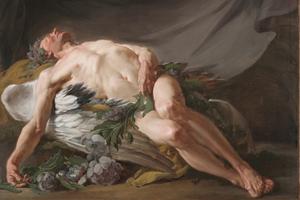Kennings in Beowulf: The Whys and Hows of Kennings in the Famous Poem
 Kennings in Beowulf are one of the main topics discussed by scholars and students about this famous epic poem. Beowulf is an Old English epic poem written between 975 and 1025 AD, and it happens to take place in Scandinavia. It was written by an anonymous author, who outlined the journey of a Germanic hero named Beowulf.
Kennings in Beowulf are one of the main topics discussed by scholars and students about this famous epic poem. Beowulf is an Old English epic poem written between 975 and 1025 AD, and it happens to take place in Scandinavia. It was written by an anonymous author, who outlined the journey of a Germanic hero named Beowulf.
One of the most brilliant attributes about this poem is the use of kennings, and you can read this to learn all about them.
Kenning Examples in Beowulf and General Kenning Examples
To better understand kennings in Beowulf, it’s helpful to get a number of modern examples of kennings to practice with.
A few kennings you might be familiar with include:
- fender-bender: car accident
- ankle-biter: child
- four-eyes: a glasses-wearer
- pencil-pusher: someone who works at a desk all day on administrative tasks
- tree-hugger: someone who cares greatly about the environment
These hyphenated words and short phrases give a unique description of everyday things. They enhance language, use words in a unique way, add action and color to our imagination, and give us a better understanding of the scene.
Here are some examples of kenning in Beowulf together with their meaning in the epic poem:
- battle-sweat: blood
- sleep of the sword: death
- whale-road: the sea
- raven-harvest: a corpse/corpses
- sky-candle: the sun
- ring-giver: a king
- earth-hall: burial mound
- helmet-bearers: warriors
- stout-hearted: brave
- dwelling-place: residence
At some points in the poem, the kennings are mostly used as a sort of a riddle, where the reader tries to figure out what word is that the anonymous writer is trying to describe. For example, while “dwelling-place” is quite easy to gather, what about “bent-necked wood?” the latter was the kenning describing the word ‘boat.’
Hero Descriptions: Kennings to Describe Beowulf, the Main Character
 Some of the kennings from Beowulf were used to describe the main character, and not only the aspects of the story. Since they are written in a poetic way, these kennings can give us a better and more complete idea about the character himself.
Some of the kennings from Beowulf were used to describe the main character, and not only the aspects of the story. Since they are written in a poetic way, these kennings can give us a better and more complete idea about the character himself.
Some of the kennings describing Beowulf include ‘ring-prince’ and ‘scylding warrior.’ However, there are other kennings that describe his appearance, personality, and even actions.
For example, when he arrives at the Danes to offer his services to kill Grendel, the monster, there is a person jealous of his ‘sea-braving,’ which is his ability to defeat the sea on his journey over.
The Fearsome Monsters: Kennings in Beowulf That Describe Grendel
Even though Beowulf is the main character of the poem, it doesn’t mean he’s the most interesting. In addition, it doesn’t mean that he’s the character with the most kennings ascribed to him.
Grendel, the terrible, gruesome monster who causes problems for the Danes, is given all kinds of kennings too. Even without reading the poem, you can understand just how frightening this monster is, simply by looking through his list of kennings.
The kennings used in Beowulf to describe Grendel include:
- shepherd of evil
- guardian of crime
- Hell’s captive
- Sin-stained demon
- God-cursed brute
These descriptions add to the characterization of the antagonist in the tale, and as you read, you get an even wider picture of who Grendel is. The author hasn’t used plain words such as ‘bad,’ ‘evil,’ or ‘disgusting.’ He has given the readers a real idea of what his monster is through his use of kennings.
Varying Translations of Beowulf Which Might Affect Kennings in Beowulf
The original poem was written down in Old English, throughout the years, there have been hundreds upon hundreds of translations done.
After the original version was found, it was partially burnt, which destroyed some parts of the poem. Following this, the first translation was made into modern-day English in 1805. Consequently, in that same century, nine different translations were completed.
In the proceeding centuries, hundreds of translations took place, some being good, and some not so good. The difficulties in Beowulf are in the types of verses that are written, the alliterations highlighted, and the use of caesura, or a break, along with the changes of dialect within the writing of the poem.
In addition to this, it was originally written with pagan themes because of the time period, however later on some Christian elements were added to the poem.
With all the translations that are around to this day, the kennings have slightly shifted. In such manner, for example, in one translation it was seen that they had named Grendel “Hell’s captive,” on the other hand in another translation, “fiend out of Hell.”
It’s not completely different, but these kinds of contrasts could affect the story slightly and our experience with it. However, the purpose of kennings remains the same: to further enhance the enjoyment of the epic tale.
What Are Kennings, And Why Are They Used In Literature?
Kennings are compound expressions, used to describe the plot both vividly and creatively, where it also gives the reader a poetic sense. Kennings were very common in both Old English and Old Norse literature, and the poem of Beowulf is filled with kennings of all kinds. The word ‘kenning’ comes from the Old Norse ‘kenna’, which means ‘to know.’ One can see the use of this word in the Scottish dialect verb ‘ken’, to know something.
Kennings are beautiful, lyrical and expressive descriptions that are made either into one word, a few words, or hyphenated words. The main purpose of kennings is to add something more to the poem, just like descriptive words or flowery adjectives.
They are responsible to add new images to the story, by bringing out the beauty of it. In the case of Beowulf, kennings are used to increase the alliterative effect as well as increase our understanding of his tale.
The Anglo-Saxon poetry (or Old English) is a little bit different from the poetry that we have today because focus on rhyme wasn’t seen as much maybe even not at all. Nonetheless, it served a focus on beats and syllables, and each line contained certain numbers.
There even were alliteration, which is the occurrence of the same letter or sound in words right after another. Kennings were added to this side in the poem, and it also came with enjoyment of the story.
The Background of Beowulf, the Famous Epic Poem With an Anonymous Author
Beowulf is an epic poem written in Old English, between 975 to 1025 AD that describes an epic hero’s battle with a monster. We’re not sure who wrote it, and there is some evidence that it was originally an actual orally-told story.
Eventually, someone wrote it down, but the plot could have changed many times before it was put to paper. The story takes place in the 6th century in Scandinavia, and it is about the famous, brave warrior named Beowulf.
It starts when The Danes are troubled by a terrible monster, and Beowulf comes to slay him and gain himself a hero’s reputation. Not only did he successeeds with his plan, but also when the monster’s mother attacked, he was able to slay her as well. He lived the life of a hero but later got killed in a battle with a dragon. Beowulf is a perfect example of an epic poem together with showing the type of literature which was popular during the time period.
Conclusion
 Take a look at the main points about Beowulf and kennings in Beowulf:
Take a look at the main points about Beowulf and kennings in Beowulf:
- Beowulf is an epic poem written in Old English by an anonymous author, passing the story orally before being written down
- Kennings come from the Old Norse word ‘kenna,’ meaning ‘to know’, they are compound words or short phrases, sometimes hyphenated, which are used to describe a different word
- In Beowulf, kennings are used very often, as metaphors, giving color to the reader’s imagination.
- It has likely gone through many changes as it went through generations and through translations
- Some of the kennings found in Beowulf include ‘battle-sweat’ for blood, ‘raven-harvest’ for corpses, ‘whale-road’ for the sea, and ‘sleep of the sword’ for death
- Grendel, the monster, has several wonderful kennings to describe him: ‘Hell’s captive,’ ‘sin-stained demon,’ and ‘God-cursed brute’
Kennings in Beowulf create a beautiful and vivid picture for readers as they follow Beowulf on his adventure to kill the beast Grendel. We have the epic hero with his “light of battle” (sword), and the terrible beast or “God-cursed brute” as his enemy.
Beowulf slays him like the hero he was aiming to be, and with the absence of kennings, the poem wouldn’t be the same and likely not as famous.


